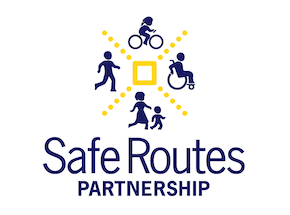The following publications are produced by the Safe Routes Partnership for use in advancing Safe Routes to School, active transportation, and shared use in all communities. To search for a publication on a specific topic, use the advanced search tool and start typing in "Safe Routes Partnership" in the author field, then select it from the list that appears.
Safe Routes to School improves sidewalks and street crossings and creates safe, convenient, and fun opportunities for children to bicycle and walk to and from school. The CDC has recognized Safe Routes to School as one of a handful of programs that are cost-effective and show significant population health impacts within five years.
This report provides an introduction to MPOs for those who want to better understand regional planning and how to influence it to benefit health, active transportation, and equity.
Making sure that community members can travel safely by foot, bus, or bike to get to where they need to go is an essential part of a healthy community. As a result, it is important that the concept of Vision Zero be fully implemented in every part of District of Columbia.
Evaluation is a critical step to help programs assess the impact and effectiveness of your efforts to improve safe and equitable access to parks.
This report provides an overview of beneficial approaches taken by MPOs to advance health, support walking and biking, and create more equitable communities.
Community engagement is most effective when residents are involved in ongoing, collaborative efforts to improve walking, biking, and access to parks.
Grassroots organizing takes root as community members and advocates in Muscoy, CA worked together to achieve wins for walking, biking, and Safe Routes to School.
The Modesto Airport Neighborhood is a suburban community in the Central Valley that had not historically received much in the way of Safe Routes to School investment and attention.
This fact sheet explains one way to fund active transportation improvements: bonds. It covers what bonds are, how they can be used to pay for active transportation infrastructure, and provides advice for advocates interested in using this method to pay for active transportation.
The city of Salem, Oregon has increasingly recognized the important role of biking and walking as a way of getting around the city.

